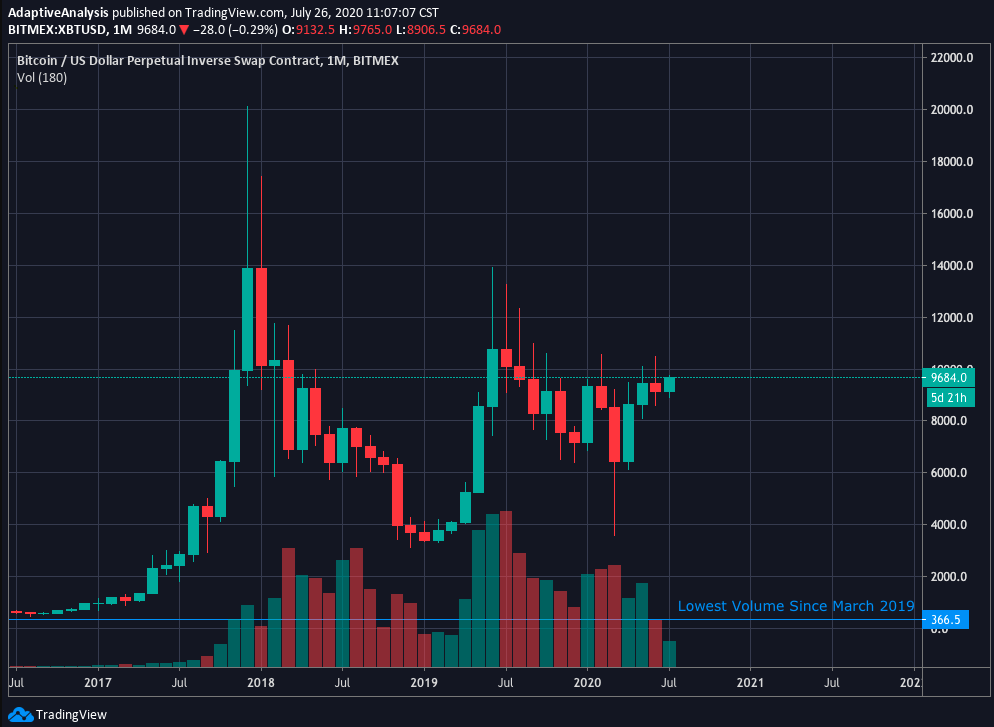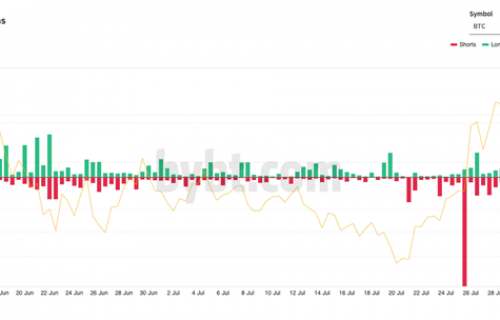VYSYN VENTURES WEEKLY INSIGHTS #9
After roughly two years of conservative risk-taking, altcoins have been recording a prolonged period of outperformance compared to both Bitcoin and other asset classes. From roughly the start of 2018 to the start of 2020, altcoins have severely underperformed Bitcoin. During this time, many speculators anticipated a prolonged spell of altcoins outperforming but it failed to materialize until recently.
The altcoin season came in the aftermath of turbulent macroeconomic developments. After a sharp price drop in almost all asset classes in March, crypto investors recovered with a voracious appetite for risk.
Meanwhile, the June trading volume in Bitcoin dropped to its lowest level since March 2019. While Bitcoin has appreciated ~35% year-to-date (YTD), the increase was vastly outpaced by altcoins with one index by FTX showing ~115% YTD appreciation. The bellwether of the altcoin market – Ethereum – has increased by 132% YTD.
In the latest VYSYN Ventures analysis, we detail the three biggest tailwinds driving the altcoin outperformance. We also detail why we may only be in the early phases of what could be a sustained outperformance in DeFi and one factor which has had a minimal impact on the recent rise in altcoin prices.
Bitcoin Halving Narrative Subsiding
Since the start of 2019, the halving has been a dominant narrative pushing investment in Bitcoin. The reduction in the Bitcoin block subsidy from 25 BTC to 12.5 BTC was widely forecasted to be an extremely bullish event for Bitcoin price.
Price increases around the first two halving events fueled the narrative for why the third would be a bullish catalyst. Furthermore, forecasts from the stock-to-flow (S2F) model were widely circulated with a simple takeaway of $55k post-halving. The S2F model was a widely debated and publicized statistical study that explores how the value of the Bitcoin network relates to it’s supply issuance schedule.
Unsurprisingly, the third halving turned out to be a non-event. As analysts such as Nic Carter have highlighted, markets simply do not treat publicly known information as catalysts for price-moves.
“I make no secret of the fact that I’m sceptical of the model. I don’t believe issuance changes represent new information being brought to market, so treating them as if they are information shocks seems incoherent.”
The real market-moving event turned out to be how crypto investors positioned themselves for the halving. But the aftermath resulted in the lowest volatility and volume in the Bitcoin market since Q1 2019.
With the halving in the rearview mirror, investors are looking for new narratives to underpin their search for outperformance. Altcoins have taken front and centre as a new wave of infrastructure and protocols come to prominence.
Infrastructure Development & DeFi Craze
At the forefront of the recent outperformance of altcoins has been a surge in interest in decentralized finance (DeFi). Advocates for DeFi hold optimism that the technology can bring the censorship-resistant and permissible features of blockchain technology to financial services. Users will be able to do far more than simply transfer and store value in a decentralized payment network. They will be able to deposit idle assets to earn interest or participate in lending markets.
(Source: DeFipulse.com)
The optimistic expectations for DeFi are evident in the movement of capital into DeFi infrastructure since mid-June. The total-value locked in DeFi protocols has increased from ~$1 billion to $3.67 billion on July 26th. Protocols that issue tokens to those who lock value successfully captured significant attention among crypto investors. Activities termed “yield farming” and “liquidity mining” spiked in popularity as some investors secured outsized returns on protocols facilitating such activities. Protocols such as Compound and Balancer spearheaded the increase in locked DeFi value due to their “yield farming” and “liquidity mining” features.
For a description of “yield farming” and “liquidity mining”, see our previous article here.
USDT Launching on Ethereum
The role USD Tether (USDT) likely played in altcoin outperformance cannot be understated. Tether issuance has increased from $4.6 billion in March to over $10 billion at the time of writing.
Exchange trading research by CryptoCompare highlights that the dominant share of Bitcoin speculation takes place in USDT. With USDT becoming the primary trading pair for speculators, it also facilitates greater speculation in altcoins and tokens.
Furthermore, the majority of new USDT supply has been issued as an ERC-20 token on the Ethereum blockchain. This spurs greater speculation in Ethereum-based tokens which have been among the leading performers of this altcoin season.
New Capital Likely Not An Altcoin Season Catalyst
One factor which likely played a minimal role in the altcoin season is the inflow of new capital. As highlighted by DeFi analyst Andrew Kang, the spiked interest in DeFi has been spearheaded by serious crypto investors. There have been limited demand-side increases from those who were beforehand unfamiliar with crypto. The interest of institutions is starting to be piqued but they are far away from investing capital. The wider retail market is even further away.
The Anatomy of Altcoin Season – Where Are We Now?
The real drivers of bull markets are widely acknowledged as institutional money and greater retail investment. Despite remarkable growth recently, the size of DeFi remains a blip on the cryptocurrency radar. In terms of the wider macro markets, it doesn’t even show up on the radar.
The majority who have already exposed themselves to DeFi are typically already involved in crypto in some manner. Those who have currently allocated capital to the space can be considered “early adopters” and possibly “smart money”. Whether their investments turn out to be smartly allocated depends on the future performance of DeFi tokens.
Some high-risk activities in DeFi such as using borrowed money to collateralize further lending have unnaturally propped up prices. This gives some significant downside risk to the TVL locked in protocols. However, an inflow of fresh capital from institutions or retail would be sufficient to further increase DeFi prices and catalyze a new wave of investment in the wider altcoin market.
As the VYSYN analysts will be monitoring how altcoin season progresses and also how it will impact Bitcoin in our weekly release. In the meantime, subscribe to the VYSYN Telegram channel for daily updates on important news developments.


